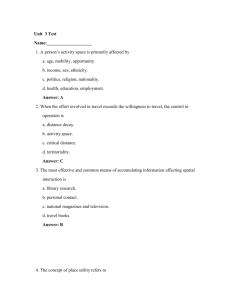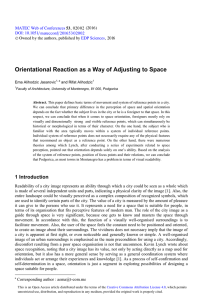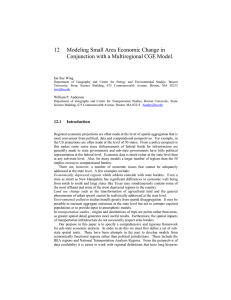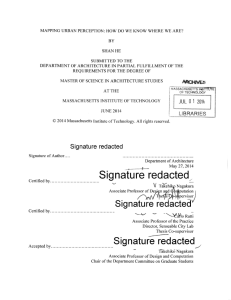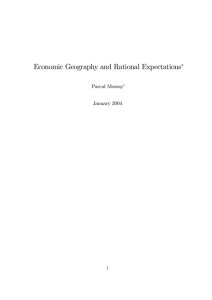AP Human Geography Chapter 3 Vocab and Critical Thinking
advertisement
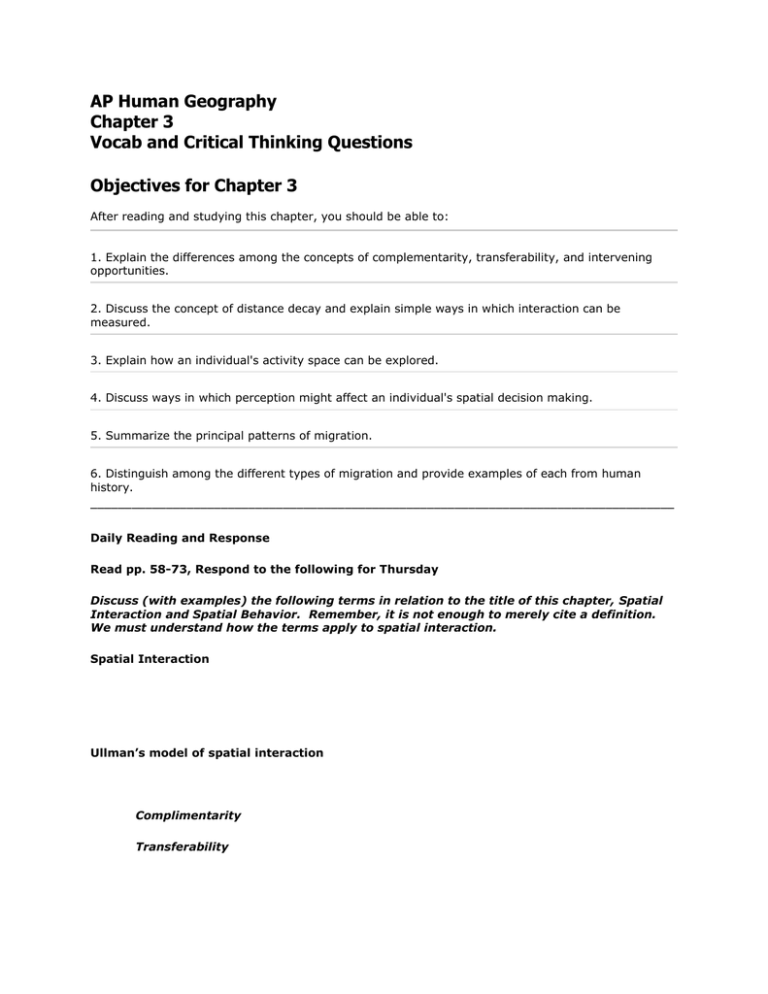
AP Human Geography Chapter 3 Vocab and Critical Thinking Questions Objectives for Chapter 3 After reading and studying this chapter, you should be able to: 1. Explain the differences among the concepts of complementarity, transferability, and intervening opportunities. 2. Discuss the concept of distance decay and explain simple ways in which interaction can be measured. 3. Explain how an individual's activity space can be explored. 4. Discuss ways in which perception might affect an individual's spatial decision making. 5. Summarize the principal patterns of migration. 6. Distinguish among the different types of migration and provide examples of each from human history. _____________________________________________________________________________________ Daily Reading and Response Read pp. 58-73, Respond to the following for Thursday Discuss (with examples) the following terms in relation to the title of this chapter, Spatial Interaction and Spatial Behavior. Remember, it is not enough to merely cite a definition. We must understand how the terms apply to spatial interaction. Spatial Interaction Ullman’s model of spatial interaction Complimentarity Transferability Intervening Opportunity How might Ullman’s model help us understand the global trade in petroleum? What is the problem with focusing on “aggregate, not individual” behavior? (Fellman, 60) Friction of distance and the retarding effect of distance on human interaction Distance Decay Why is the “inverse square” relationship difficult to apply to human spatial interaction? Explain Carey’s Gravity Model. How does it differ from Ullman’s model of spatial interaction? How is Reilly’s law of retail gravitation related to the gravity model? What problem with distance decay and gravitational pull models does the Potential Model attempt to address? Movement Bias Distance bias Direction bias Network bias Circulation Mobility Migration Mobility Explain how an individual’s activity space is determined by : Stage of life Mobility Opportunities (how is awareness space related to opportunities?) How is the development of infrastructure within a country related to the concept of the space-time prism? Why/how does the “tyranny of time” appear to effect women differently than men? Explain the concept of critical distance in relation to distance decay. Personal communication field Place Perception Environment Perception




